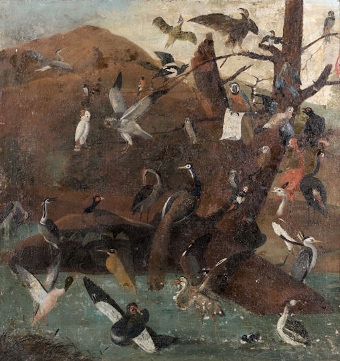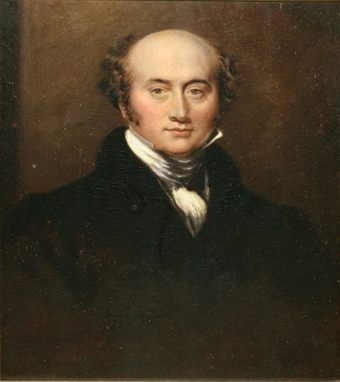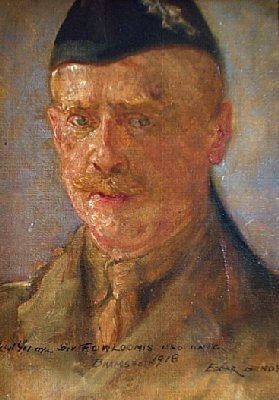a scene from trial by jury by gilbert and sullivan
- View other items in:
- antiques interior design modern and vintage
- other interior design
artware ltd
Enquire about this antique
Artware Ltd has 565 antiques for sale.
click here to see them all
In 1874, Gilbert wrote a short libretto on commission from producer?composer Carl Rosa, whose wife would have played the leading role, but her death in childbirth cancelled the project and left the libretto an orphan. Not long afterwards, Richard D''Oyly Carte was managing the Royalty Theatre, and he needed a short opera to be played as an afterpiece to Offenbach''s La P?richole. Gilbert already had available the libretto he had written for Rosa, and Carte suggested that Sullivan write the score. The composer was delighted with it, and Trial by Jury was composed in a matter of weeks. D. H. Friston''s engraving of the original production of Trial by JuryThe piece is one of Gilbert''s humorous spoofs of the law and the legal profession, based on his short experience as a barrister. It concerns a breach of promise of marriage suit. The defendant argues that damages should be slight, since "he is such a very bad lot," while the plaintiff argues that she loves the defendant fervently and seeks "substantial damages." After much argument, the judge resolves the case by marrying the lovely plaintiff himself. With Sullivan''s brother, Fred, as the Learned Judge, the opera was a runaway hit, outlasting the run of La P?richole. Provincial tours and productions at other theatres quickly followed. Fred Sullivan was the prototype for the "patter" (comic) baritone roles in the later operas. F. C. Burnand wrote that he "was one of the most naturally comic little men I ever came across. He, too, was a first-rate practical musician... As he was the most absurd person, so was he the very kindliest..." Fred''s creation would serve as a model for the rest of the collaborators'' works, and each of them has a crucial comic little man role, as Burnand had put it. The "patter" baritone (or "principal comedian", as these roles later were called) would often assume the leading role in Gilbert and Sullivan''s comic operas, and was usually allotted the speedy patter songs. After the success of Trial by Jury, Gilbert and Sullivan were suddenly in demand to write more operas together. Over the next two years, Richard D''Oyly Carte was one of several theatrical managers who negotiated with the team but were unable to come to terms. Carte also proposed a revival of Thespis for the 1875 Christmas season, which Gilbert and Sullivan would have revised, but he was unable to obtain financing for the project.
Gilbert and Sullivan refers to the Victorian era partnership of librettist W. S. Gilbert (1836?1911) and composer Arthur Sullivan (1842?1900). The two men collaborated on fourteen comic operas between 1871 and 1896, of which H.M.S. Pinafore, The Pirates of Penzance and The Mikado are among the best known. Gilbert, who wrote the words, created fanciful "topsy-turvy" worlds for these operas, where each absurdity is taken to its logical conclusion?fairies rub elbows with British lords, flirting is a capital offence, gondoliers ascend to the monarchy, and pirates turn out to be noblemen who have gone wrong. Sullivan, six years Gilbert''s junior, composed the music, contributing memorable melodies that could convey both humour and pathos. Their operas have enjoyed broad and enduring international success and are still performed frequently throughout the English-speaking world. Gilbert and Sullivan introduced innovations in content and form that directly influenced the development of musical theatre through the 20th century. The operas have also influenced political discourse, literature, film and television and have been widely parodied and pastiched by humorists. Producer Richard D''Oyly Carte brought Gilbert and Sullivan together and nurtured their collaboration. He built the Savoy Theatre in 1881 to present their joint works?which came to be known as the Savoy Operas?and he founded the D''Oyly Carte Opera Company, which performed and promoted their works for over a century.
Gilbert was born in London on 18 November 1836. His father William was a naval surgeon who later wrote novels and short stories, some of which included illustrations by his son. In 1861, the younger Gilbert began to write illustrated stories, poems and articles of his own to supplement his income. Many of these would later be mined as a source of ideas for his plays and operas, particularly his series of illustrated poems called the Bab Ballads. One of Gilbert''s illustrations for his Bab Ballad "Gentle Alice Brown"In the Bab Ballads and his early plays, Gilbert developed a unique "topsy-turvy" style, where the humour was derived by setting up a ridiculous premise and working out its logical consequences, however absurd. Director and playwright Mike Leigh described the "Gilbertian" style as follows: With great fluidity and freedom, [Gilbert] continually challenges our natural expectations. First, within the framework of the story, he makes bizarre things happen, and turns the world on its head. Thus the Learned Judge marries the Plaintiff, the soldiers metamorphose into aesthetes, and so on, and nearly every opera is resolved by a deft moving of the goalposts... His genius is to fuse opposites with an imperceptible sleight of hand, to blend the surreal with the real, and the caricature with the natural. In other words, to tell a perfectly outrageous story in a completely deadpan way.
Gilbert developed his innovative theories on the art of stage direction, following theatrical reformer Tom Robertson. At the time Gilbert began writing, theatre in Britain was in disrepute. Gilbert helped to reform and elevate the respectability of the theatre, especially beginning with his six short family-friendly comic operas, or "entertainments," for Thomas German Reed. Ages Ago, during the rehearsals for which Frederic Clay introduced Gilbert to SullivanAt a rehearsal for one of these entertainments, Ages Ago (1869), the composer Frederic Clay introduced Gilbert to his friend, the young composer Arthur Sullivan. Two years later, Gilbert and Sullivan would write their first work together. Those two intervening years continued to shape Gilbert''s theatrical style. He continued to write humorous verse, stories and plays, including the comic operas Our Island Home (1870) and A Sensation Novel (1871), and the blank verse comedies The Princess (1870), The Palace of Truth (1870), and Pygmalion and Galatea.
Sullivan was born in London on 13 May 1842. His father was a military bandmaster, and by the time Arthur had reached the age of 8, he was proficient with all the instruments in the band. In school he began to compose anthems and songs. In 1856, he received the first Mendelssohn Prize and studied at the Royal Academy of Music and at Leipzig, where he also took up conducting. His graduation piece, completed in 1861, was a suite of incidental music to Shakespeare''s The Tempest. Revised and expanded, it was performed at the Crystal Palace in 1862 and was an immediate sensation. He began building a reputation as England''s most promising young composer, composing a symphony, a concerto, and several overtures, among them the Overture di Ballo, in 1870. The Crystal Palace, where several early Sullivan works premiered.His early major works for the voice included The Masque at Kenilworth (1864); an oratorio, The Prodigal Son (1869); and a dramatic cantata, On Shore and Sea (1871). He composed a ballet, L''?le Enchant?e (1864) and incidental music for a number of Shakespeare plays. Other early pieces that were praised were his Symphony in E, Concerto for Cello and Orchestra, and Overture in C (In Memoriam) (all three of which premiered in 1866). These commissions, however, were not sufficient to keep Sullivan afloat. He worked as a church organist and composed numerous hymns, popular songs, and parlour ballads. Sullivan''s first foray into comic opera was Cox and Box (1866), written with librettist F. C. Burnand for an informal gathering of friends. Public performance followed, with W. S. Gilbert (then writing dramatic criticism for Fun) saying that Sullivan''s score "is, in many places, of too high a class for the grotesquely absurd plot to which it is wedded."[16] Nonetheless, it proved highly successful, and is still regularly performed today. Sullivan and Burnand''s second opera, The Contrabandista (1867) was not as successful.
Antiques.co.uk Ref: HDC6UUA2
- Materials:
- Oil on Canvas
- Width (cm):
- 63.50 x 76.20 cm 25.00 x 30.00 ins
Artware Ltd
Artware Fine Art specialises in fine antique, decorative and historical portraits and topographical pictures . We cover a period from the 17th and 18th centuries through to the 19th & 20th Centuries. We have over 150 portraits in stock, which can be viewed on our web site, each historical portrait has well researched biographical information both on the sitter and the artist.
Contact details
18 La gare
51 Surrey row
London
Greater London
SE1 0BZ
UNITED KINGDOM
T: 0207 921 97904
E: greg@artwarefineart.com
W: www.artwarefineart.com














